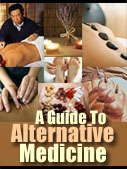Color Therapy
Color Therapy
Both Egyptians and Greeks built temples of healing and specific
colors. Color therapy is a big part of Chinese medicine and Ayurvedic practices, and much
research has been done in the area of light and color therapy as an addition to traditional
therapies and treatments.
In America, Dr. Harry Spitler found that he could significantly
increase a patient's reaction to therapy and treatment by changing the amount and color of
light entering the eyeball, producing physiological and psychological changes.
Today there are literally thousands of practitioners of color
therapy, unfortunately, anyone with a series of different colored lights in their office may
be able to pass themselves off as a color therapist, so ask as many questions of them as they
are asking of you during the initial visit, and leave if they can not answer them to your
satisfaction.
First of all color therapy is considered complimentary medicine,
and a good and reputable color therapist will refer you to another practitioner for treatment
of your ailment(s), using color therapy only in conjunction with their
recommendations.
Color therapy is based on creating balance and enhancing
energy.
Using seven colors of the light spectrum along with proper
placement on each Charka of the body, these colors resonate with the body's own healing
energies to alleviate stress, headaches, etc.
Each color has its own wavelength and feeds the energy of the
corresponding Charka. The colors and their corresponding Charkas are as follows:
1) Violet = the crown of the head
2) Indigo = the brow
3) Blue = the throat
4) Green = the heart
5) Yellow = the solar plexus
6) Orange = the lower tummy area
7) Red = the base or groin
Each charka is thought of as an energy wheel, with each color as a
cog in the machine of the body. When one cog is out of alignment, the entire "machine" runs
improperly or breaks down, so good health is achieved by keeping all seven cogs flowing
proper energy to each part of the body.
During the first session the color therapist you will be asked a
series of questions and they will explain the various methods of treatment.
They should also discuss the use of color in every day life for
balancing energy. (How the different colors of clothing and decorations in your home affect
your charka balance.)
Because color has an effect on all of us physically, mentally,
emotionally, and spiritually, the therapist can determine which color energy you are lacking
in your life and "prescribe" different colors or combinations thereof along with light
therapy in addition to other holistic treatments in order to bring your life on all four
levels back into balance.
For example, the crown color is violet, which is connected to the
organ of the brain and relates to self knowledge and/or spiritual awareness.
This color has had good effects in working with depression, memory
loss, and even Alzheimer's patients. It is considered a "cool" color to have calming
properties.
Blue relates to self expression and the digestive tract, green
relates to the heart and breast and helps with the immune system. Yellow is a warm color and
has an effect of stimulating the stomach and liver.
The color relates to self worth. Orange is a color for sociability
and creativity. It governs the uterus, bowels, ovaries, and testes. People wear it for joy
and self confidence. Red stimulates the appetite and interestingly enough is often used in
restaurant decoration.
Lie on your back with your feet up and the cycle begins all over
again, as the charkas run in line from the top of your big toe to the edge of your heel, each
color represented.
You may also want to research that there is an essential oil or
combination of essential oils in relation to each of the charkas.
Charkas on animals run from the back of their necks to the base of
their tails, and oftentimes healing colors are used with crystals to increase energy
output.
|























